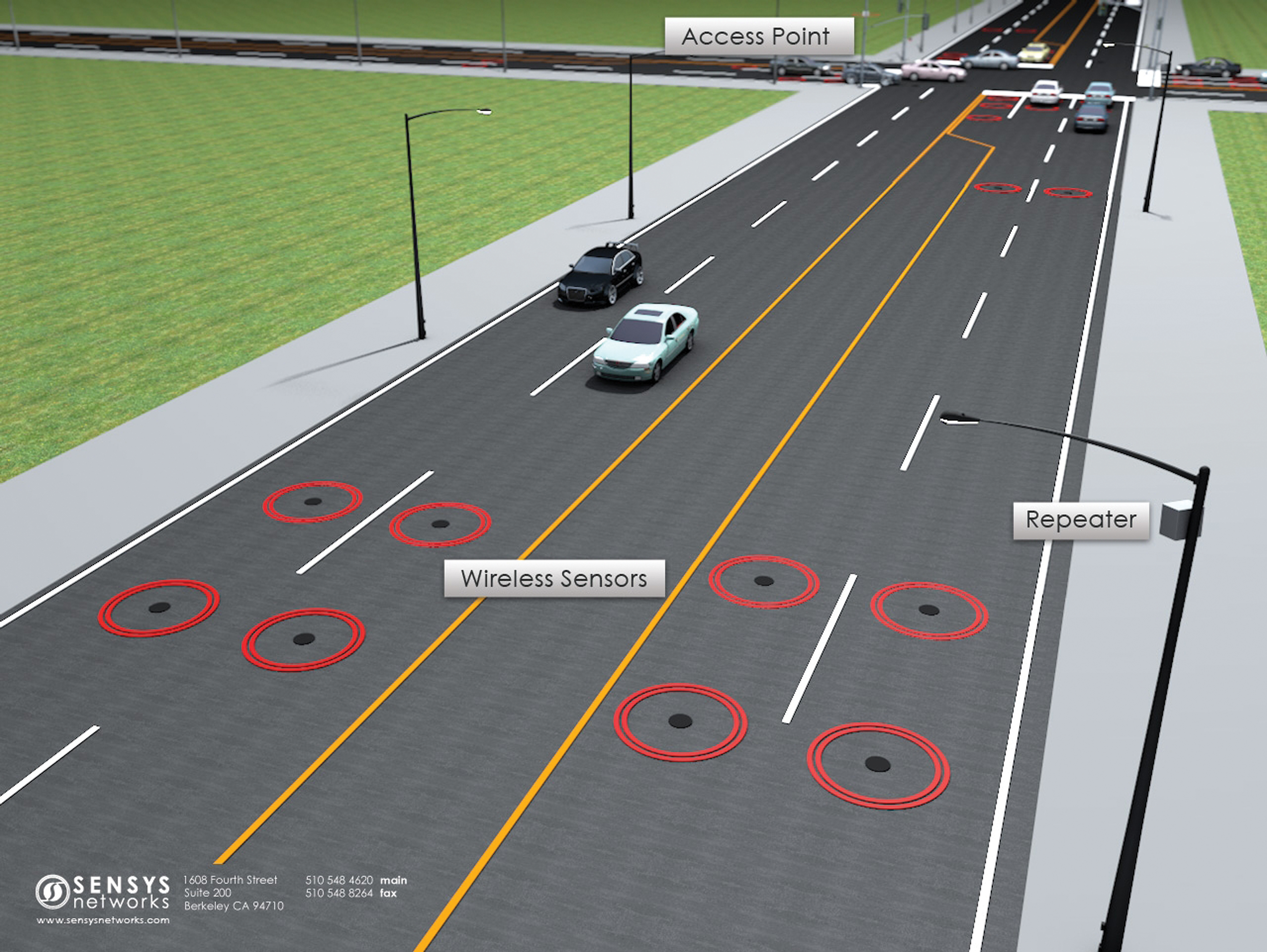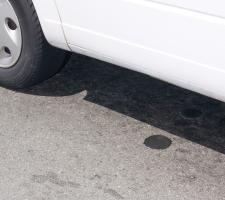
How Sensys Networks’ roadway sensors work
Innovative parking initiatives on the US Pacific Coast. David Crawford reviews
Californian cities are leading the way in trialling new solutions to their endemic parking problems. According to Donald Shoup, a professor of urban planning at theWith service provider
The SFpark system is designed to enable the SFMTA to monitor the locations and levels of demand for parking, space-by-space and minute-by-minute, and so even out parking availability. It sees this as key to reducing drivers’ needing to circle while searching (and so generating unnecessary greenhouse gas emissions).
It is also moving away from a one-size-fits-all approach to parking charges with a flexible policy designed to ensure that, with the prices set right, there is at least one space available on every metered block. The idea is to incentivise drivers to alter their behaviour: for example, to park a few blocks away from their destination and then walk; to drive at different times of the day; combine what might have been multiple trips into a single journey; or opt for public transport.
At pilot area parking spots, wireless sensors supplied by parking management specialist
In April 2011, the agency introduced credit and debit card payment for parking. It also began making real-time parking data publicly available at <%$Linker:
To support the initiative, wireless traffic detection developer
In February this year, the SFMTA implemented its latest demandresponsive rate adjustments. As a result, rates have:
• Decreased by US$50¢ during 5% of metered hours; • Decreased by US$25¢ during 30% of metered hours; • Stayed the same for 39% of metered hours; and • Increased by UD$25¢ during 26% of metered hours
Taking onboard the safety issues potentially involved in using an app while driving, Shoup believes that this will eventually become a non-issue as the result of variable pricing influencing occupancy levels to allow sufficient availability where it is needed. The pilot phase runs until summer 2012, including evaluations of both the technology and the pricing strategy, with a view to citywide implementation by the end of 2012. The US$25M project is being 80% funded through the Urban Partnership Program of the
On to Los Angeles
Following San Francisco’s example, Los Angeles has designated a 11.7km2 area in the city’s Downtown district as the site for its oneyearParking problems
A September 2011 survey by IBM of 8000 commuters in 20 cities around the world (including Los Angeles) highlighted difficulties in finding parking spaces. Over half those polled said that during the previous year they had given up at least once when looking for a space.
The survey found that more than 30% of city traffic can consist of drivers searching for parking. It cited a year-long study showing that drivers in a 15-block district of Los Angeles drove in excess of 1.5 million km and produced 730 tonnes of CO2 in trying to find a spot.
At the same time that it published the survey, IBM announced, within its Smarter Planet initiative, a new partnership with
In November 2010, Streetline was named the winner of the
It also aims, as in San Francisco, to cut cruising and congestion and encourage modal shift. The project will move forward in three tightly-planned phases, with coin, credit/debit card and mobile phone payment available throughout:
• Phase I - Base hourly rate (starting from the launch). Using baseline data, the system will iteratively refine parking charges to start influencing demand in the direction of the project goals.
• Phase II – Time of day (starting no more than two months after the launch). Building on the demand balance hoped to be achieved in phase I, the system will identify peak periods and then establish hourly rates by time of day.
• Phase III - Adaptive (starting no more than six months after the launch). In defined sections of the area, the system will adjust rates per block in real-time to reflect current demand levels.
Peer Ghent, senior management analyst with the Meter Operations Division of the LA Department of Transportation (LADOT), told ITS International: “We anticipate that, with each initial iteration, we will come closer to the main goal. But, until we implement time of day pricing, we know that there will be times when we fall short.”
There are some 5,500 single-space meters and 150 multi-space pay stations in the project area, with on-street parking supplier
It is additionally providing a MERGE-based website. Parking guidance will also be available through an array of dynamic message signs (some newly installed) and mobile phone apps such as Streetline’s Parker. Again, in collaboration with the city’s www.go511.com travel and traffic information service, drivers will have access to an interactive voice recognition system.
According to Ghent, there has been industry interest in the inclusion of parking information in on-board navigation systems “though the short lead time has made it unfeasible to include this feature in new car navigation systems in time for ExpressPark,” he says. “However an important part of the project is to publish an API for the parking data, making it available to those who wish to build apps for smartphones or in-vehicle systems.”
The current USDOT funding ends in May 2013. Local funding is secure through to June 2013, with availability beyond June 2013 being subject to a budget request for city funds to continue the programme in the project area and expand it to other suitable locations. ExpressPark follows on from earlier city-funded pilots in two other LA districts, Hollywood and Studio City, which are likely candidates for any expansion.
Further north, Canada’s Pacific Coast city of Vancouver, long noted for having the highest on-street parking rates in North America, is eyeing these developments with keen interest. “We will take lessons learned from the San Francisco and Los Angeles experiments,” says the city’s director of transportation, Jerry Dobrovolny.












